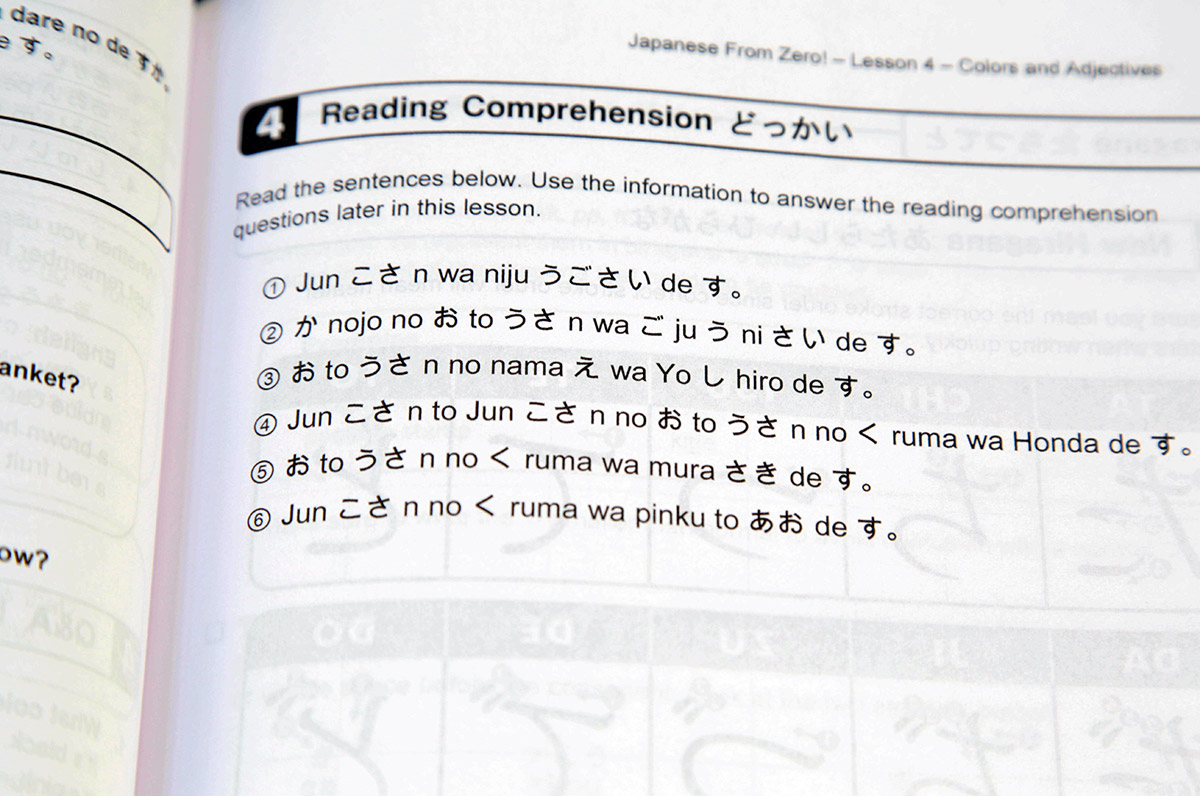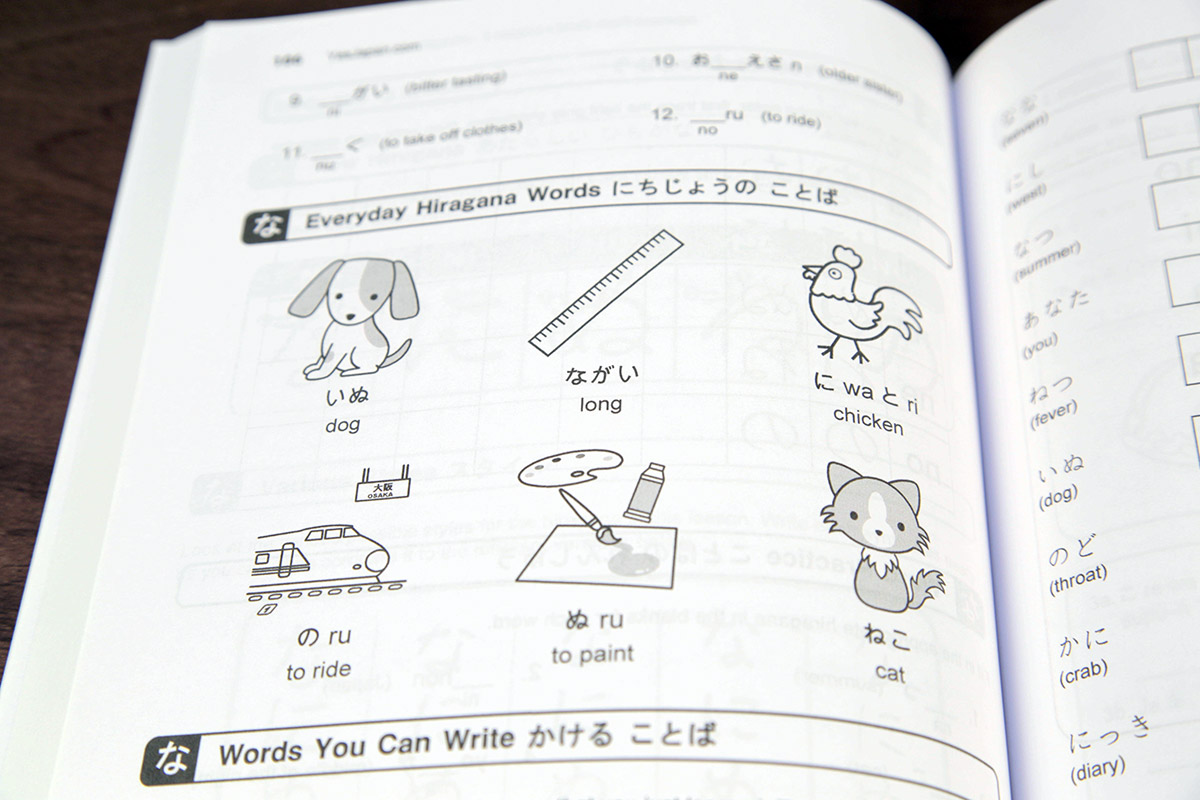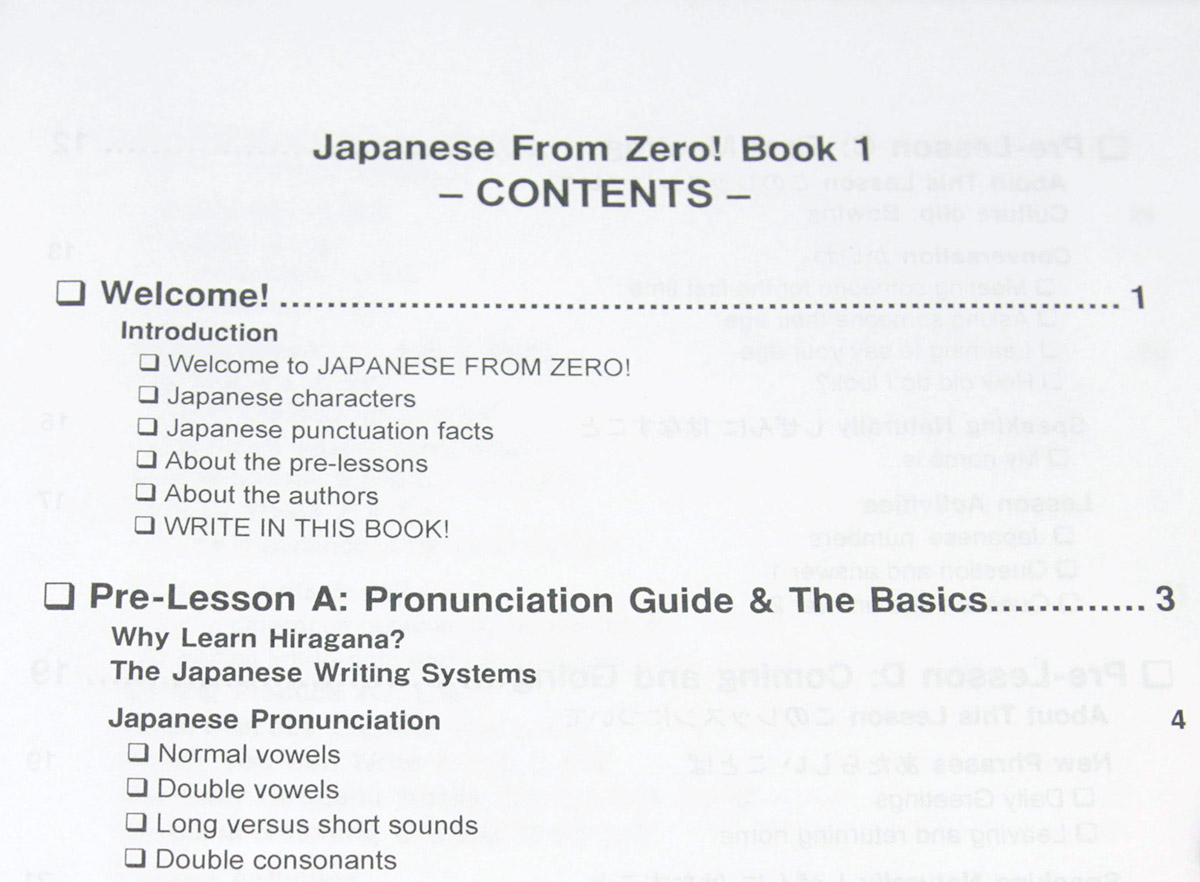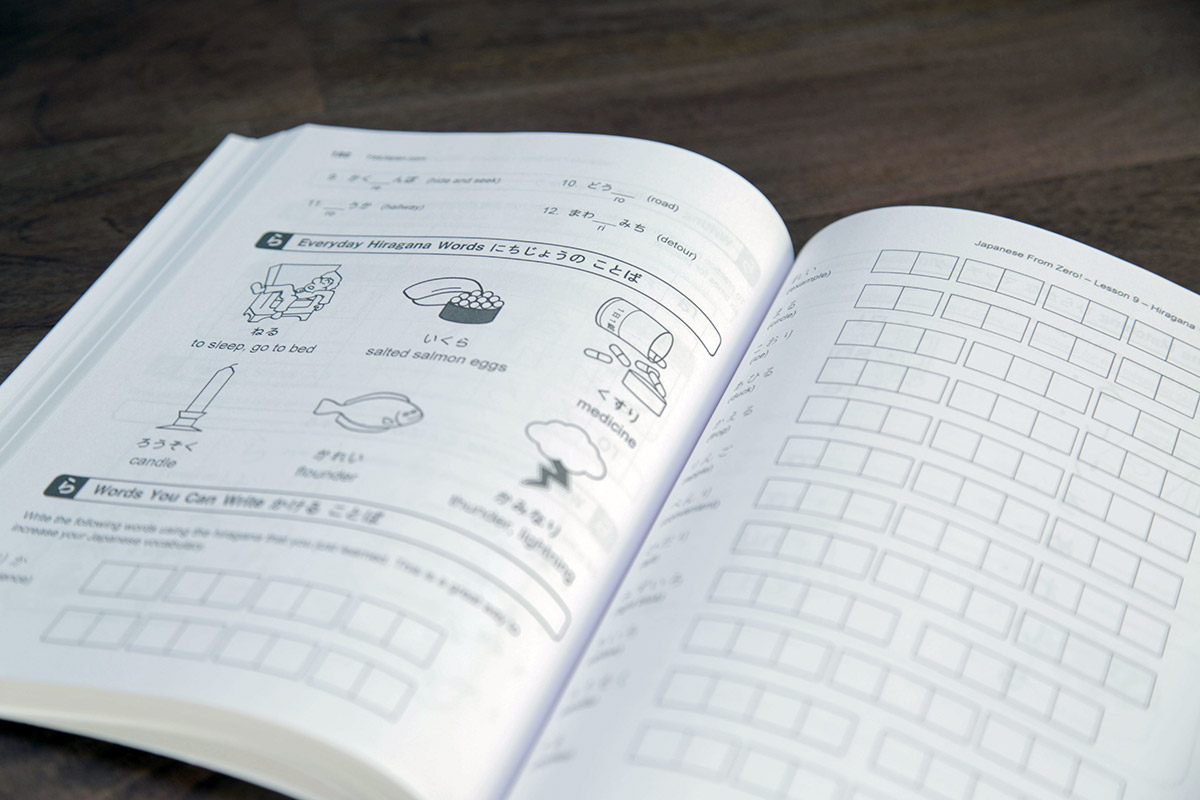When people ask for a recommendation of a physical Japanese textbook, we usually say "Genki." It covers Japanese language concepts very logically and is great for beginners. Adult beginners, that is. So what about for kids?
Thankfully I discovered Japanese from Zero! by George Trombley and Yukari Takenaka. Though it's not necessarily made for children, its layout, explanations, and approach make it, effectively, Genki for kids. Older learners may find it useful as well, especially those who need a slower paced approach before moving onto Genki. But is it right for you? Hopefully our Japanese from Zero review will answer that for you.
Progressive Edition?

Japanese from Zero! has the words "Progressive Edition" on the front, and progression is the main feature. It's designed to ease you into learning Japanese, feeding you small bits of information at a time.
"How exactly is it progressive?" you ask. The book begins in romaji and introduces a new set of hiragana in each chapter. That means that you'll see sentences like "あたraしいterebiがhoしいです。" in the middle of the book.
It also progressively introduces grammar and vocabulary. Verbs aren't introduced until the next to the last lesson, which seems pretty late to me. Most of the book is spent learning vocabulary, proximity words, numbers, colors, and adjectives, along with the proper question words that help you ask for/about things and understand the answers. You end up learning a surprising amount without the use of verbs. But I can't help but feel you'd do better to learn verbs along with the rest of the information given.
The progressiveness will be the deal breaker for most people. Personally, I feel romaji only serves to stunt your growth in the language. The sooner you learn hiragana and katakana and reading real Japanese, the better off you'll be. However, young kids who get easily frustrated may find this method easier and more effective, even if it does take longer.
The Japanese from Zero Style

Though the information is doled out slowly, it is taught in an excellent way. I found the writing style fun and easy to read. The explanations of the grammar is comprehensive and quickly absorbed. If you don't enjoy the dense explanations of other textbooks, you'll appreciate the approach Japanese from Zero! takes.
The lessons are reinforced in the workbook pages of Japanese from Zero!, which are conveniently integrated into the text. Most textbooks require you to buy a separate workbook for exercises and homework. Japanese from Zero! saves you the hassle of switching between two books by having all the exercises built in.
Though people ask for it, a Japanese from Zero pdf or Japanese from Zero ebook wouldn't be a great idea because it's made to be written in. It encourages you to write notes in the lesson portions. This is great emotional encouragement that will keep readers connected to the source material. The exercises, though conveniently placed, are not that challenging and suitable for younger learners.
Japanese from Zero Contents

Because it's hard to describe the way this book progresses, I thought it would be helpful to take a look at the table of contents. This might help you better judge whether or not Japanese from Zero! will fit your needs.
Table of Contents
Pre-Lesson A: Pronunciation Guide & the Basics
Pre-Lesson B: Basic Counting
Pre-Lesson C: First Meeting
Pre-Lesson D: Coming and Going
Lesson 1: Creating Simple Sentences
Lesson 2: Working with a Topic
Lesson 3: Possession
Lesson 4: Colors and Adjectives
Lesson 5: Likes and Dislikes
Lesson 6: Wanting and Not Wanting
Lesson 7: Locations
Lesson 8: Dates and Past Tense
Lesson 9: Days, Weeks, and Years
Lesson 10: Asking for Things
Lesson 11: Counting Objects
Lesson 12: Japanese Verbs
Lesson 13: Telling Time
Japanese from Zero Features

Japanese from Zero! also includes Culture Clips, which are short explanations on Japanese culture. These are things like bowing, the difference between sushi and sashimi, the origin of -san さん, how Japan celebrates Christmas, and so forth. Like the rest of the book, these facts are basic and intended for those starting from zero. They are a nice addition, but there aren't many. There are only 9 total, not even one for each chapter. This is a shame because they would do a lot to round out the book's usefulness.
One of the benefits of this book, which also slows it down, are the tangents it takes to explain the nuances of Japanese that a beginner might encounter. For example, the book outlines the different ways calligraphy strokes end, an easy way to write fu, and the differences between a あ and o お. Just like the culture clips, these are very basic, but it shows a sensitivity to the reader. However, you should judge for yourself whether or not you need such a basic guidance.
Is Japanese from Zero Right for You?

A final note worth mentioning is that the group behind Japanese from Zero!, yesjapan.com, is a wonderful resource for learning Japanese. Their website serves as a supplement for the Japanese from Zero! series, expanding on topics up through high beginner to intermediate. The videos (especially Japanese in 5), podcasts, and games are a perfect addition to any self-study regimen. Site host George Trombley is a master teacher. His demeanor and way of explaining grammar make the concepts easy to learn and fun to use. Whether you pick up this book or not, do check out yesjapan.com.
All in all, Japanese from Zero! is a book for absolute beginners. If you're in high school or older, only use this book if you've found yourself stumped by Genki or similar texts. After gaining traction from it, try Genki again and proceed from there.
However, if you have kids in 3rd – 6th grade who are really interested in Japanese, I do recommend this book. Japanese from Zero! fills this niche and give kids with developing minds a chance to sink their teeth into Japanese language, hopefully whetting their appetites for more.
If you're still on the fence and don't mind giving away your email, you can get the whole first course for free from the Yes Japan! website. It's the next best thing to a Japanese from Zero download.
Michael’s Review
Lots of people love this series, and it does have its positives. Just be aware that some things (like hiragana) will be taught at a much slower pace. This is great for younger learners and for those who need a slower pace before graduating to something faster. I gave a score of 7 because I feel the book is an 8 for elementary age students and a 6 for adult learners.
